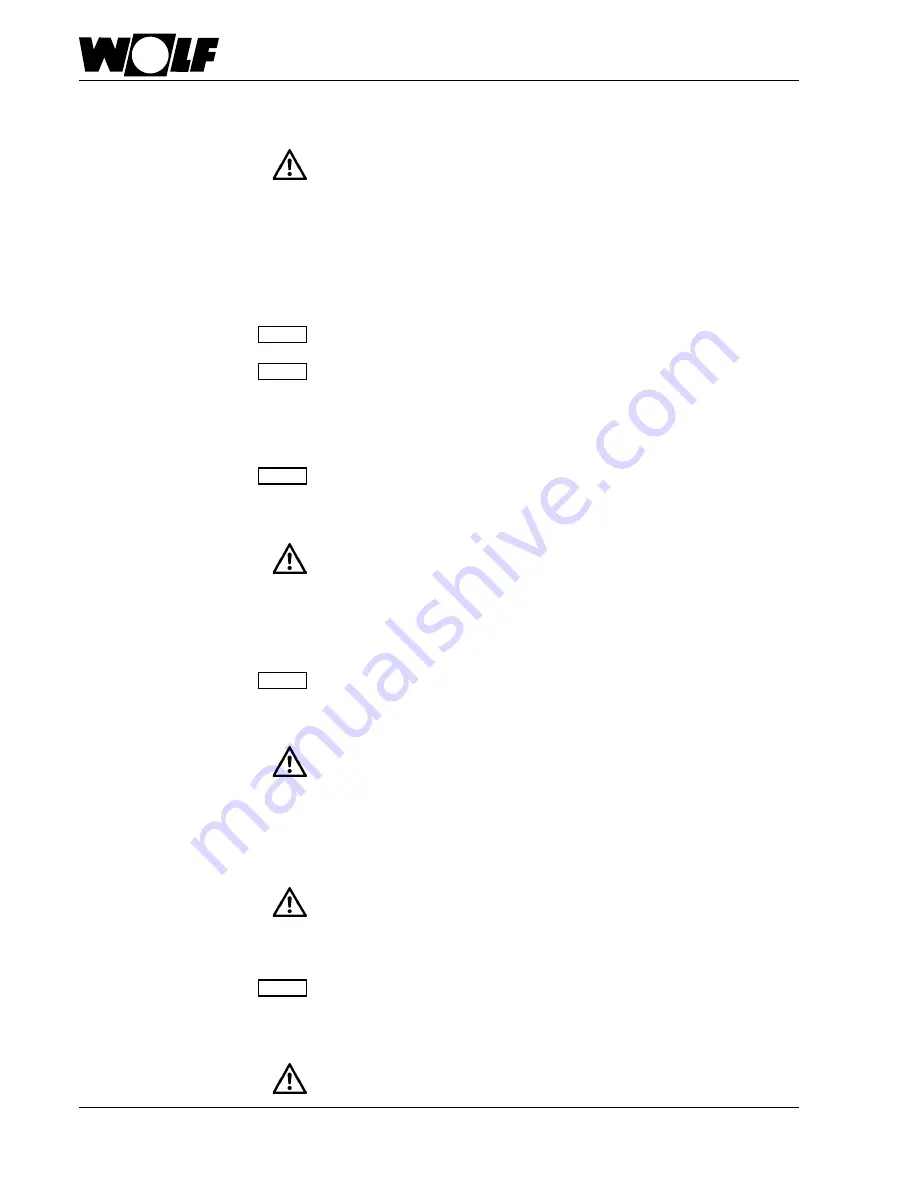
Installation / assembly
Installation
The solar tank may only be installed in a room protected against frost, otherwise the
tank and all water-carrying fittings and connecting lines must be emptied if there is a
danger of frost!
Ice formation in the system can lead to leaks and destruction of the tank!
When emptying the system, hot water may escape and cause injuries, particularly
burns!
The installation site must
guarantee
the space required for maintenance and repair
work as well as sufficient
load-bearing capacity of the base!
Thermal insulation
The thermal insulation of the tank must be installed before laying the pipes!
Keep fire, soldering flame and/or torches away from the insulation.
Warning: Danger of fire!
Drinking water filter
Since washed-in foreign particles clog up fittings etc. and cause corrosion in the lines,
it is recommended to install a drinking water filter in the cold water inlet.
Warning
Pressure reducer
The installation of a pressure reducing valve is recommended. The permissible operating
pressure of the solar tank on the service water side is 10 bar. If the mains is operated
with a higher pressure, a pressure reducer must be installed.
Exceeding the permissible operating pressure can lead to leaks and destruction
of the tank!
To reduce the flow noises within buildings, the pipe pressure should be set to approx.
3.5 bar.
The solar tank must be installed in such a way that it can be emptied without dismantling.
Drain
Hot/cold water connection
solar tank
Install insulation before installing tubing.
The solar tank must be connected according to the pipework diagram on page 4. Only
a component-tested safety valve may be used. No shut-off system may be installed
between solar tank and safety valve.
If the tank is connected with non-metal pipe materials at the hot and cold water
connections, the tank must be earthed!
The installation of splash guards or other narrowings into the connection pipe between
the solar tank and the safety valve is
not permitted
.
The minimum connection diameter of the safety valve must be DN20-¾".
The exit pipe must be at least equal in size to the safety valve outlet cross-section, may
have no more than 2 elbows and a maximum length of 2 m. If 3 elbows or a length up to
4 m are absolutely required, then the total exit pipe must be designed one nominal size
larger. The use of more than 3 elbows or a length over 4 m is
not permitted
. The exit
pipe must be installed with downward gradient. The drain pipe behind the drain funnel
must have at least twice the cross section of the valve entry. In the proximity of the exit
pipe of the safety valve, generally on the safety valve itself, a warning label must be
attached with the following text:
"During heating, water exits from exit pipe for safety reasons!
Do not plug the pipe!"
When selecting the installation material on the system side, attention must be paid to
technical regulations and to any possible electrochemical processes (mixed installation)!
The tank can be equipped with an electrical auxiliary heating system, which is equipped
with a safety temperature limiter. In the event of a malfunction, it cuts off any further
heating at max. 110° C.
The corresponding connection components must be designed for this temperature
or the temperature must be limited via a mixing valve!
At service water temperatures exceeding 60°C, limitation to 60°C via a mixing valve is
generally recommended!
Hot water can lead to injuries, particularly scalding!
Warning
Warning
Warning
Warning
14
3062505_201507















































